Welcome to The Bakers’ Cottage, a newsletter about baking, stories, and the rhythm of life in the north. If you’re new here, thank you for joining. If you’re already a subscriber – I’m so glad to have you back.
If you enjoy what I do and want to support my writing and recipe development, please consider becoming a paid subscriber. Your support means the world – and helps keep this space full of good things.
This post is part of my Seasonal Letters series.
And this month’s letter is a slow one. About tulips still asleep beneath the snow, dahlia tubers tucked into soil, and the quiet craving for sharp horseradish and soft-boiled eggs. It’s about dreaming of spring while still wrapped in winter – watching the last of the snow while flipping through well-worn cookbooks and thinking about the first picnic to come.
There’s no recipe today – that’s coming soon – but I’ve shared a few of the bread books I return to again and again, along with a little glimpse of what April looks like from my kitchen window. I hope you enjoy this small note from the north.
This is a rather long post, so if your email cuts out, you can view it in full on the website or in the app.
There’s more light now. It spills onto the kitchen counter before the house wakes up, catching the flour dust and the edge of my tea cup. Outside, nothing has started to grow yet – not really – but I’ve been longing to see the first tulips from my bedroom window.
In the autumn, I planted two jardinières and one of my raised beds with almost two hundred bulbs – salmon, white, reds and pinks, and apricots. Sienna helped me press them into the soil, pointy side up, and we talked about how they would wait for spring to come. And we do too.

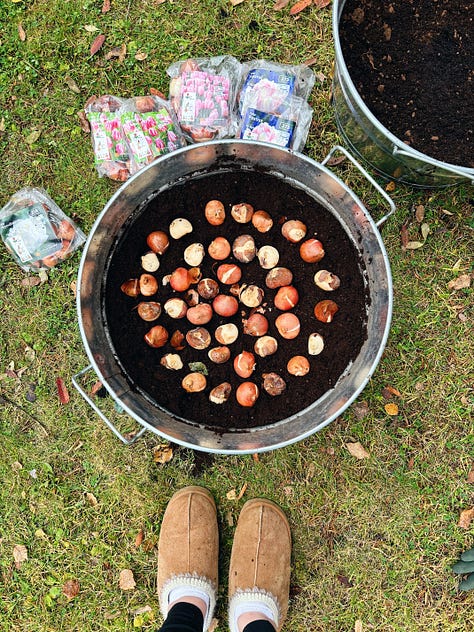
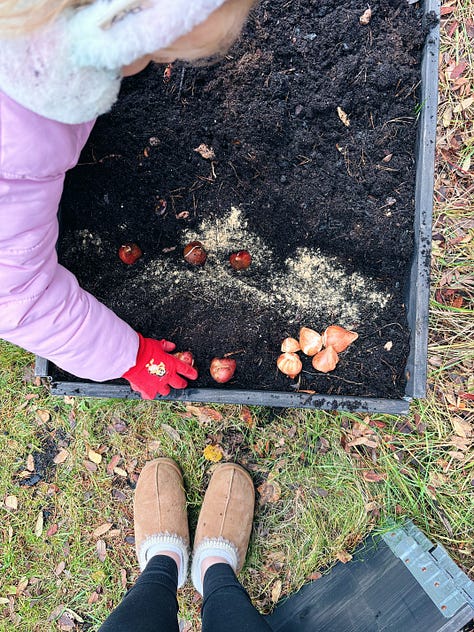


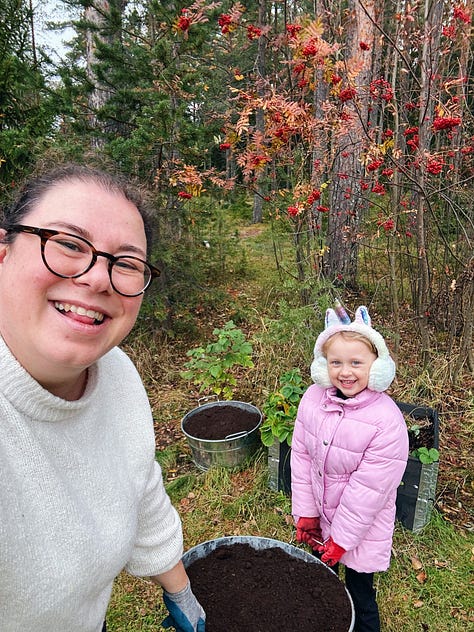
It might be past the spring equinox, but until recently, it was still very much winter. A winter that’s been harsh in an unusual way. Snow came late – and then the cold. But it never really settled. Instead, the temperatures swung wildly, from cold days – the kind that makes the air glitter – to moments that felt almost like spring.
I’m not sure what the bulbs will make of it. But I’m quietly hoping.
Then on March 22, we could see our raised beds again. Just the surface – and I know more snow will come – but it felt like a beginning.
That same day, I planted dahlia tubers, and now I’m waiting for them to sprout. Seeds, I haven’t started yet – every year it’s the same. I promise myself I won’t grow a lot of seedlings, only to later turn my kitchen into a cucumber jungle and my veranda into a greenhouse. But this year might be different. We’re traveling to France in July, and I’d rather not leave too much behind that needs tending while we’re away.
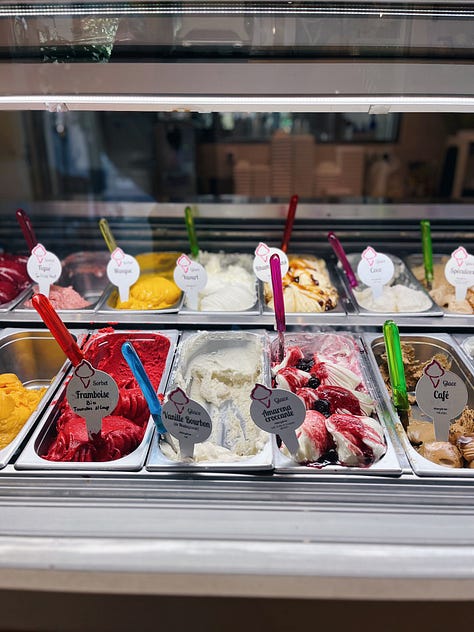

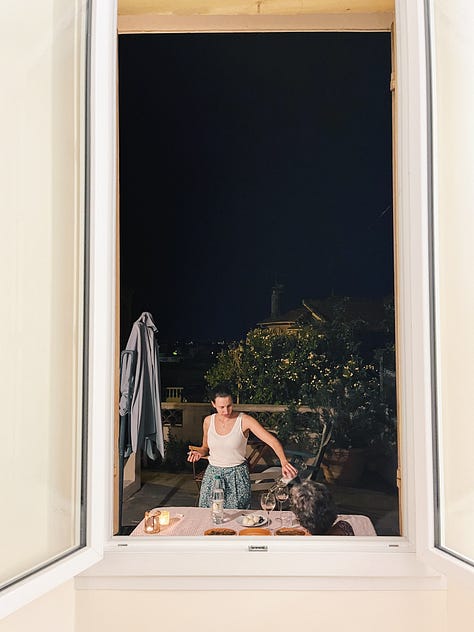

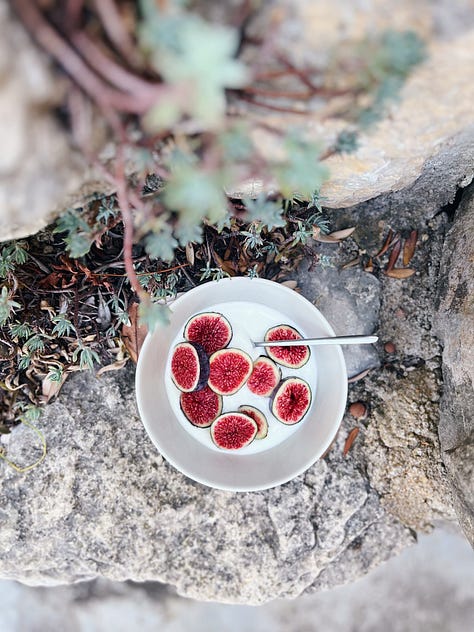
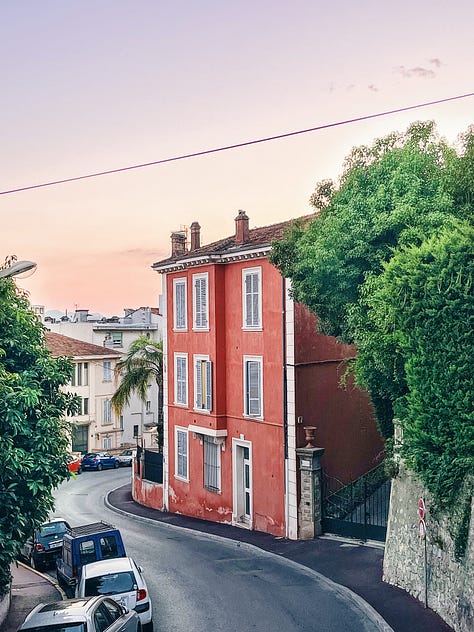



It’s been so long since we visited just for holidays. I’m already dreaming of it – strolls through the paved streets of Valbonne, the morning market in Antibes, afternoons at the Plage du Midi, and long apéros under my mother’s olive tree. But for now, I’m here – watching the last of the snow melt, enjoying the quiet luxury of having time to bake again, and letting spring arrive in its own time.
Still, as soon as the soil begins to thaw, I’ll scatter gula ärtor [yellow peas] in one of the pallkragar [raised beds]. I might even have a bag in the cupboard from the last time I made gulärtssoppa [yellow pea soup]. It was a Thursday – it always is. With rimmad fläsk [brined pork belly], and plättar [pancakes] for dessert. We like ours with strawberry jam and whipped cream.
I won’t add anything special – they don’t ask for much, just soil and a little patience. I’ve seen gardeners in the south sow them as early as January, even under a coat of snow. This will be my first try.
And if all goes well, I’ll harvest ärtskott [pea shoots] first – delicate, bright, tasting of spring. Later, sockerärtor [sugar snap peas], sweet and flat, best eaten right there in the garden.
This month, I’m not trying to do too much. Just listening to what I crave, what I want to carry forward, and what I long for.
Mainly, the return of tranor, gäss, och svanar [cranes, geese, and swans] – wings stretched wide, gliding just above the surface of the still-icy fields between Kusmark and Ersmark.
In the kitchen
I’ve been wanting to make kombucha, and pickled salads – with cabbage, peppers, carrot, chili, more lemongrass than reasonable, and ginger.
Eggs, boiled just so, with red cabbage – for colour, because really, I wish for an egg carton of pale blues and dark browns, creamy whites and mint greens – and eat them with seeded bread soldiers. Mangoes, eaten with fingers, juices running, straight from the pit. Pickled herring, with plenty of shallots and dill, allspice and black pepper, lemon zest too.
Coconut water, topped with a cloud of fluffy matcha. Turmeric lattes.
A rhubarb clafoutis, served in thick wedges with a pouring of cream speckled with vanilla seeds – made with rhubarb from K.’s dad Svante’s garden in Kusmark, which I stashed in the freezer last summer in neatly packed 500 g bags.
And a galette, filled with thinly sliced mandelpotatis, topped with crème fraîche, herbs, freshly grated horseradish and smoked salmon – or perhaps gravlax [cured salmon]. The kind of dish that feels like a pause between seasons.
Vårfloden
K. yearns for salmon too – in the river behind his childhood home. Vårfloden [spring flood], muddy waders, watching the flies he so carefully ties drift through the water.



Påsk
Sienna dreams of the påskhare who flies using her long ears – a tale I made up to combine the French tradition of les cloches and the Swedish Easter hare who comes with eggs.
It’s a strange and lovely thing, raising a child between two cultures.
In France, les cloches fly from Rome and drop Easter eggs in gardens that breathe of spring – daffodils and green grass, fruit trees in bloom, and pâquerettes [daisies].
In Sweden, the Easter hare fills cardboard eggs – wrapped in colourful foils or gammaldags [old-fashioned] Easter illustrations – with godis [candy].
We do a bit of both. Chocolate eggs filled with friture – tiny fish-shaped chocolates, as we do in France – when I have time to make them; otherwise, the påskägg we keep in our cellar are filled with Sienna’s favourite candies and small chocolate eggs, usually hidden here and there in the terracotta pots on our veranda.
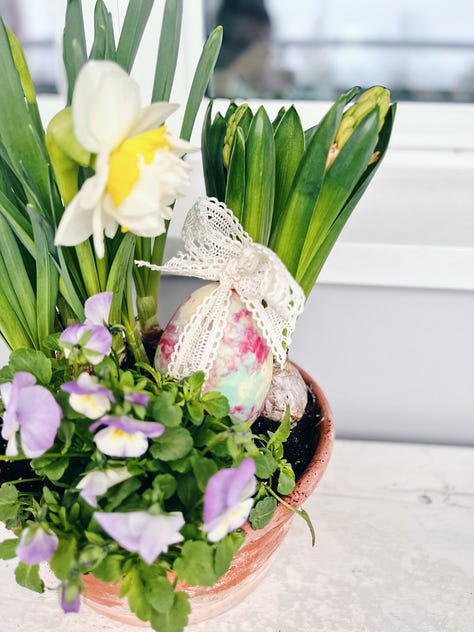

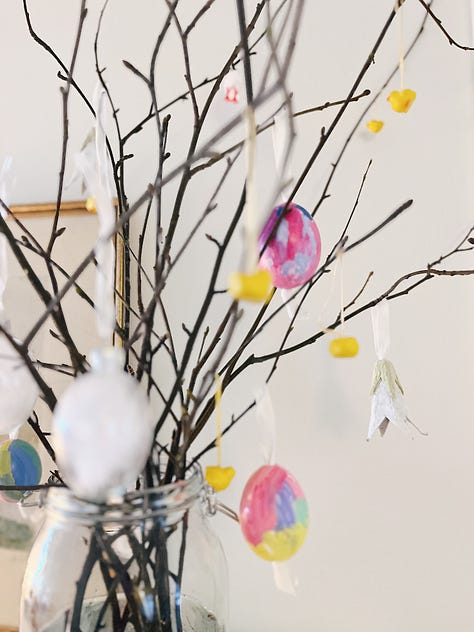
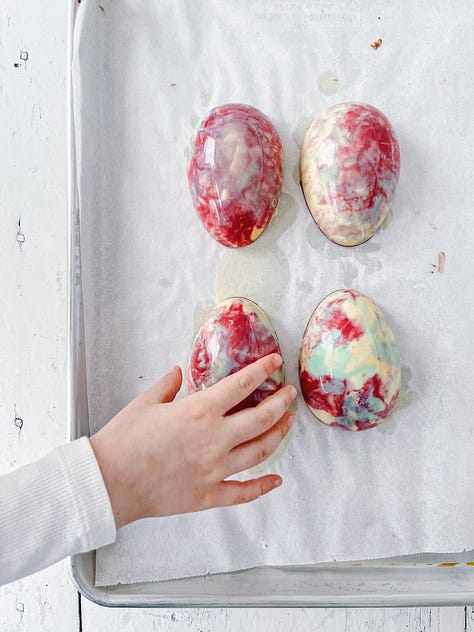
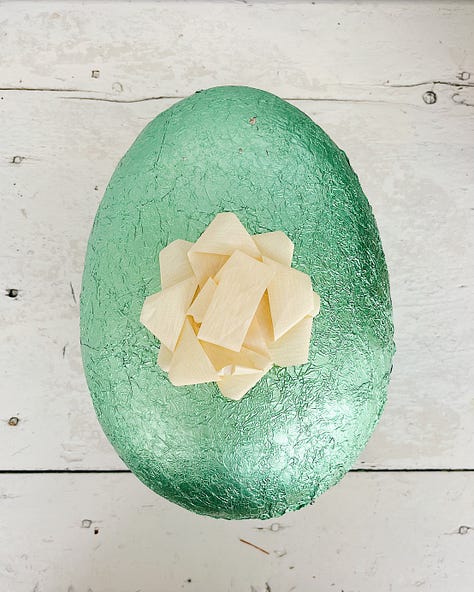
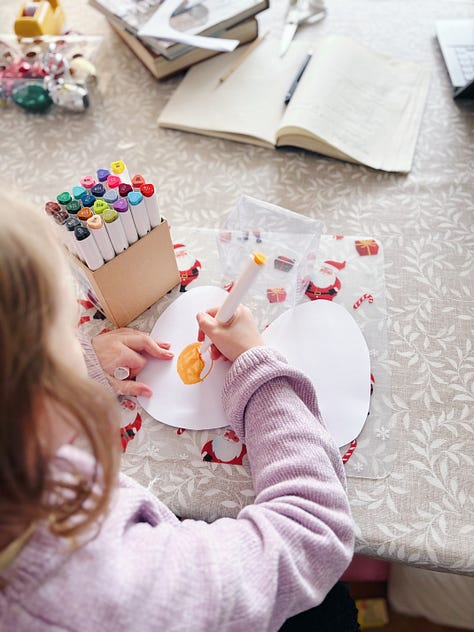
Last year, we made chocolate eggs together. My mum was here too. We coloured white chocolate with spirulina, matcha, beetroot powder and turmeric. With the leftover tempered chocolate, Sienna made bars – I assisted. It was messy, but a memory that’s going to be hard to beat for her.
But perhaps I don’t need to make it better. Just ours.
I’ll be sharing the first recipe of April – soft-boiled eggs with mouillettes [soldiers] made from smörfrallor [butter rolls] – in the next post.
The rolls are adapted from a recipe from Bageriet by Petrus Jakobsson.
In 2017, we had breakfast at his bakery – Bageri Petrus – once on Swedenborgsgatan in Stockholm, just a few minutes’ walk from Mariatorget. It’s no longer there, but I still think about the macka [open-sandwich] with cheese and orange marmalade, and the croissant K. and I shared that morning. The best croissant I’ve ever had!
That visit stayed with me – and so did his book.
On my kitchen bookshelf
Over the years, a few bread books have earned a permanent place on my kitchen shelf. Some for their recipes, others for their stories, their photographs, or the haste with which they make me put on an apron. These are the ones I return to, again and again.
Bageriet – Petrus Jakobsson
A book, written in Swedish, filled with the kind of breads I grew to love after moving here – smörfrallor, kavring, rågsiktslimpa. The instructions are confident, and the results always feel like home. I love how the recipes are tied to the rhythm of the bakery through quiet, practical notes.
Bröd och marmelad – Monika Ahlberg
A Swedish book I first picked up for its title, and kept for its charm. Monika’s writing is inviting, and the book feels like a morning in a summer cottage kitchen. The breads are simple, often baked in loaf tins, and paired with plenty of recipes for marmalades, jams, and cordials.
The Handmade Loaf – Dan Lepard
A walk through Europe, carried by deep curiosity and a love of old techniques. Dan has taught me so much over the years. This was the first bread book I ever bought, and it followed me from Valbonne to Paris, from London to Skellefteå.
Bread – Jeffrey Hamelman
A classic. I turn to it for the structure of things – percentages, shaping techniques… a trusted resource. I’ve scribbled in the margins more than once.
Tartine Book No. 3 – Chad Robertson
Let me preface by saying: I adore all the Tartine books. Tartine Bread was once my bedtime reading. But when I want to feel inspired to experiment – rye, sprouted flours, seeds, heritage wheats – I always turn to Book No. 3. Not unlike a study in wild grains and long fermentations.
Thank you for reading. I’ll be back soon with the recipe for Petrus’ smörfrallor – but until then, I hope there’s something in this letter that makes you look forward to the days ahead.





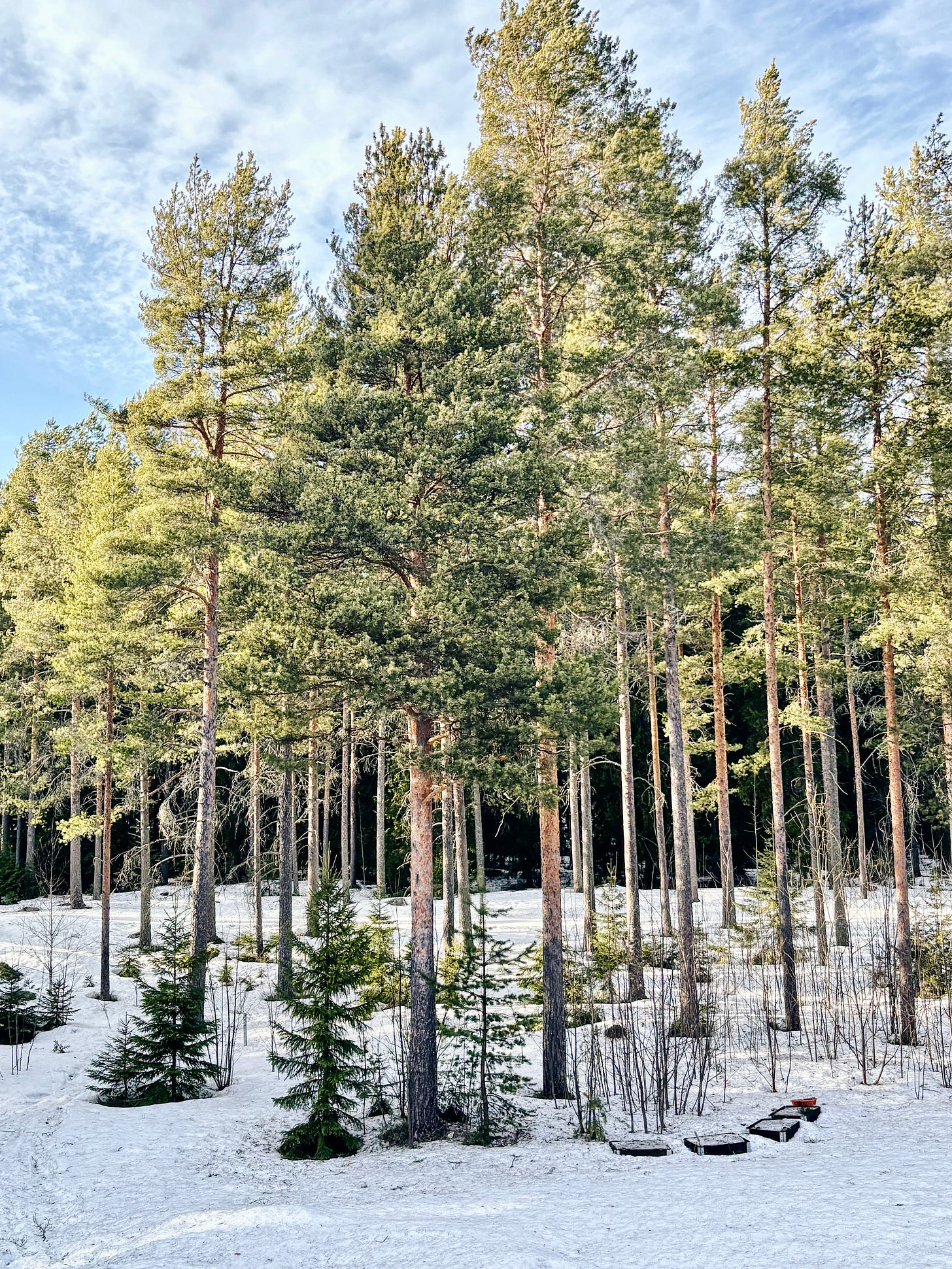


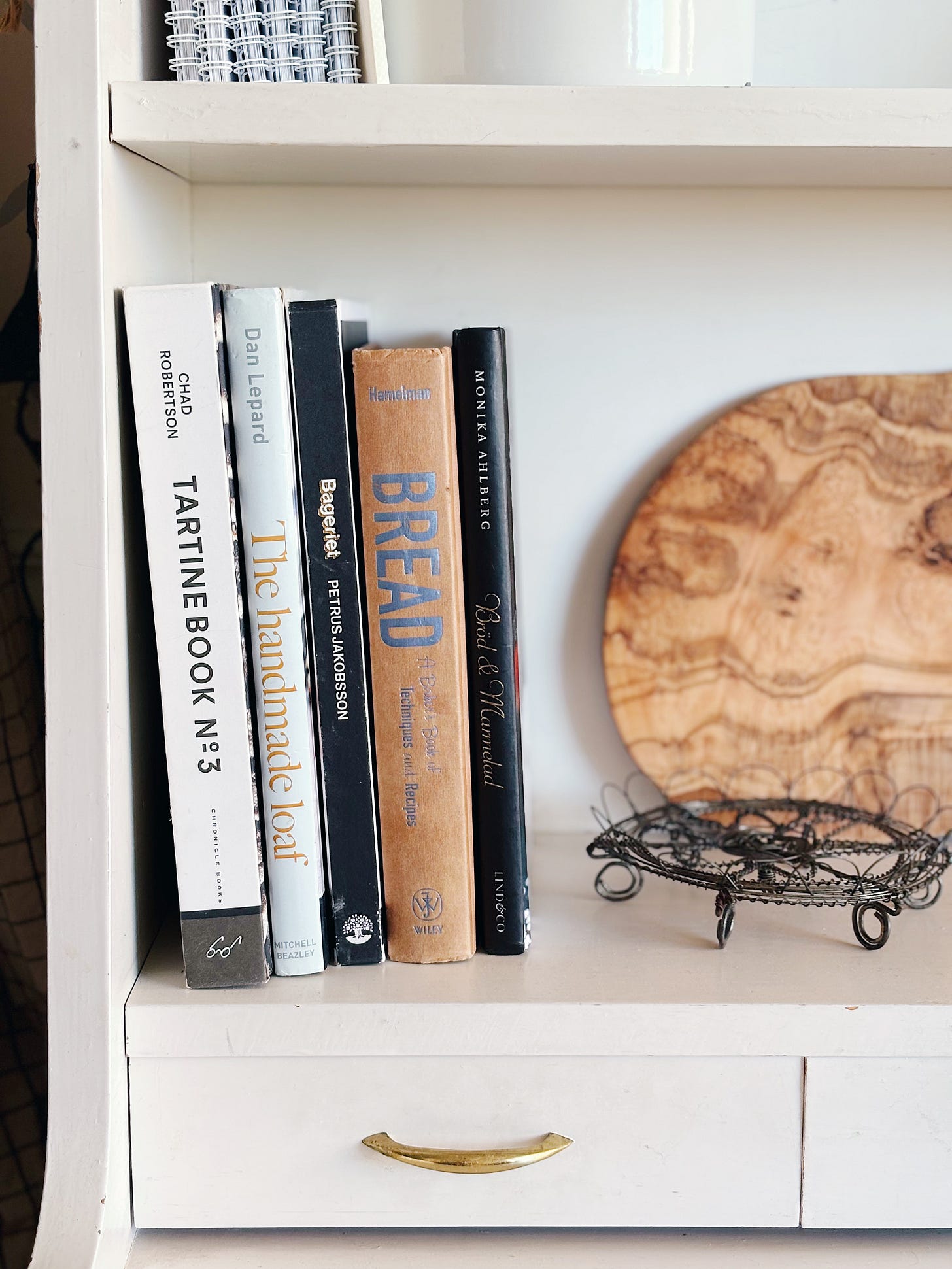

All kinds of April thoughts, Fanny. I'm looking out for the flying hare!
With Tartine in mind, have you seen that Richard Hart has released a book? It's certainly on my wishlist. :o)